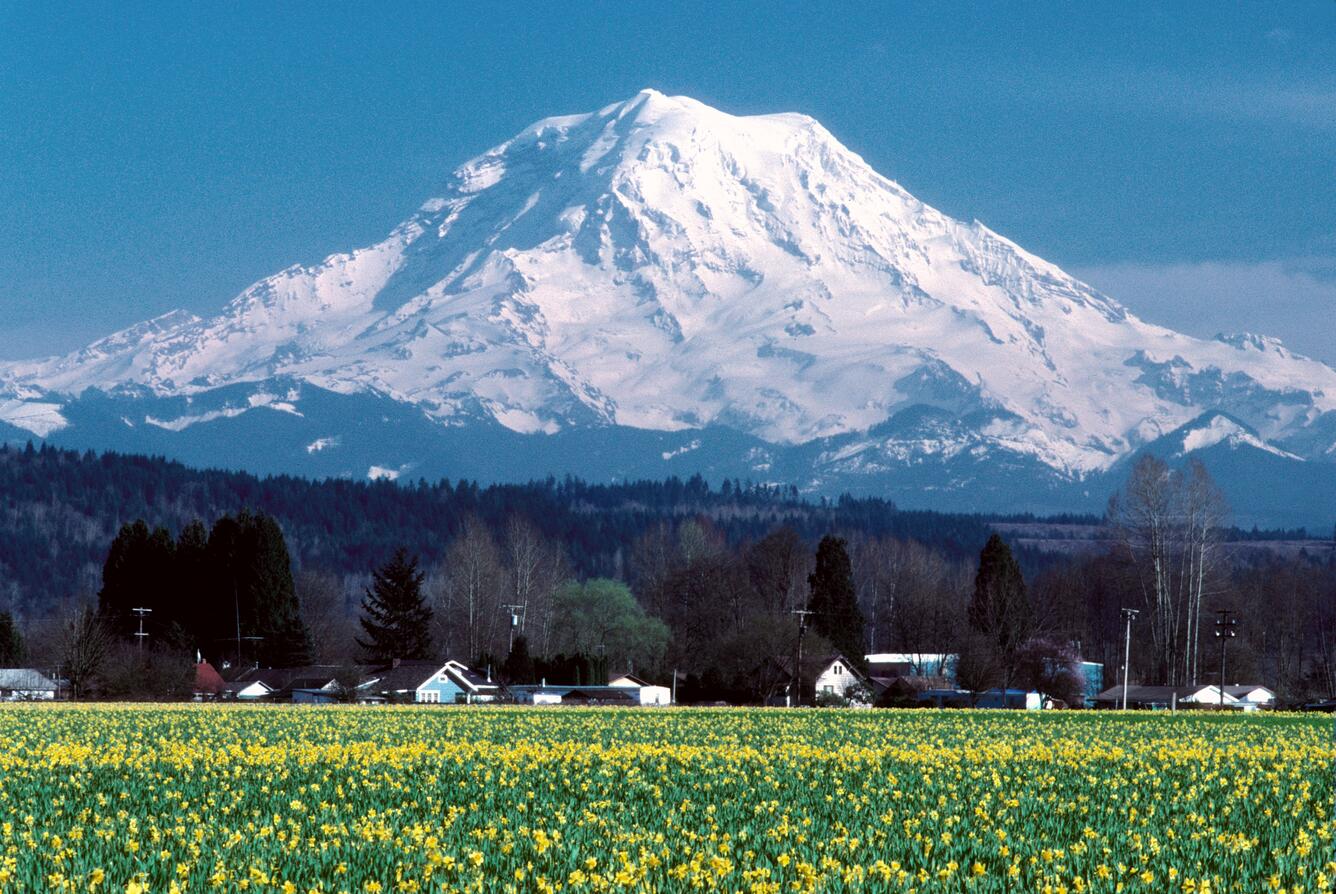
- Details
- By Kaili Berg
The Puyallup Tribal Council and Puyallup Tribal Language Program celebrated the publication of a historic paper that gives a comprehensive linguistic analysis of the many Native names for Pacific Northwest landmark Mount Rainier.
Published on February 21, International Mother Language Day, in Living Languages Journal, An Analysis of the Names for Mount Rainier provides the first comprehensive examination of Indigenous names tied to the mountain.
Authored by Dr. Zalmai ʔəswəli Zahir, a Lushootseed Language Consultant for the Puyallup Tribe, the research dives into the history, linguistics, and meanings of these names.
The study identifies at least 20 different Indigenous names used by seven distinct Tribal languages, with 18 of them being of Salishan origin.
Among these names, taqʷuʔmaʔ is one of the most widely recognized in the Lushootseed language. This term later influenced Tahoma, a name still reflected in local institutions like Mount Tahoma High School and the Puyallup Tribe’s Tahoma Market. The Yakama word tax̌úma is another variation that evolved from taqʷuʔmaʔ.
Dr. Zahir’s analysis offers insight into their linguistic structures, historical evolution, and metaphorical meanings. Many of these names reflect Indigenous perspectives, traditional stories, and the spiritual connection between Native communities and the mountain.
While Indigenous communities have long called the mountain by its various Native names, the name “Mount Rainier” was imposed by British explorer Captain George Vancouver in the late 1700s.
Vancouver named the peak after Peter Rainier, a British admiral who never set foot in the region and had fought against the American colonies during the Revolutionary War. The study highlights that, unlike its colonial designation, the Indigenous names date back centuries, possibly to the Proto-Salish era.
“The many names of the Mountain are incredibly valuable to all the people of this land because our Mountain’s name is alive. Our sacred Mountain is alive. We continuously honor our Grandmother Mountain. We will always remember that she continually feeds our people. This paper helps remind us of where our continuous life comes from,” Amber Hayward, Director of the Puyallup Language Program said in a press release.
The full paper is accessible online through Living Languages Journal, published by the University of Massachusetts Amherst Libraries. It can also be found on the Puyallup Tribe’s Language Program website.
More Stories Like This
50 Years of Self-Determination: How a Landmark Act Empowered Tribal Sovereignty and Transformed Federal-Tribal RelationsUte Tribe Files Federal Lawsuit Challenging Colorado Parks legislation
NCAI Resolution Condemns “Alligator Alcatraz”
NABS Documents 134 More Survivor Stories, Expands Digital Archive in 2025
Navajo Nation Considers Ending Statute of Limitations for Child Sex Offenses
Help us defend tribal sovereignty.
At Native News Online, our mission is rooted in telling the stories that strengthen sovereignty and uplift Indigenous voices — not just at year’s end, but every single day.
Because of your generosity last year, we were able to keep our reporters on the ground in tribal communities, at national gatherings and in the halls of Congress — covering the issues that matter most to Indian Country: sovereignty, culture, education, health and economic opportunity.
That support sustained us through a tough year in 2025. Now, as we look to the year ahead, we need your help right now to ensure warrior journalism remains strong — reporting that defends tribal sovereignty, amplifies Native truth, and holds power accountable.
 The stakes couldn't be higher. Your support keeps Native voices heard, Native stories told and Native sovereignty defended.
The stakes couldn't be higher. Your support keeps Native voices heard, Native stories told and Native sovereignty defended.
Stand with Warrior Journalism today.
Levi Rickert (Potawatomi), Editor & Publisher


